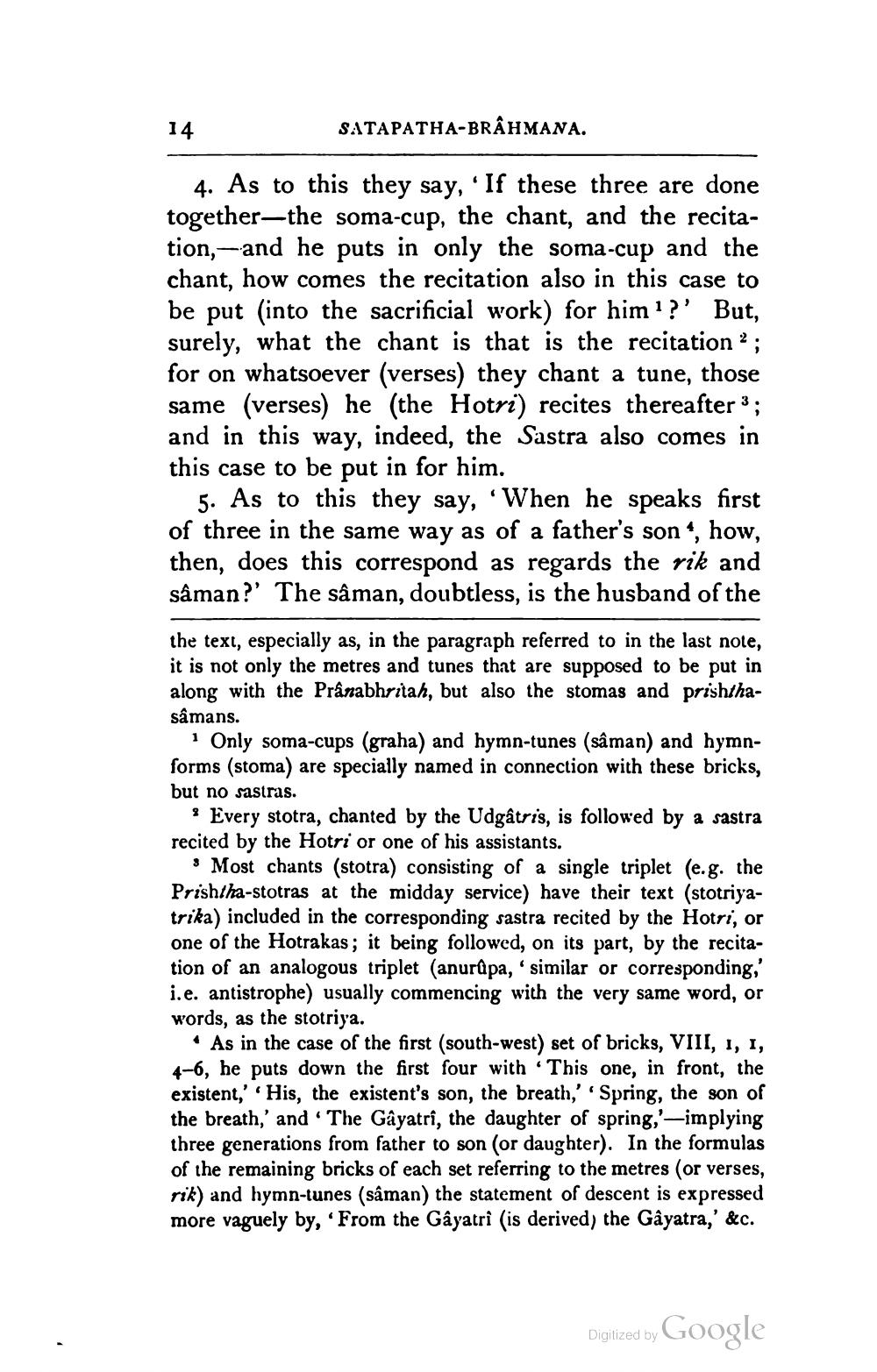________________
14
SATAPATHA-BRAHMANA.
4. As to this they say, 'If these three are done together—the soma-cup, the chant, and the recitation,-and he puts in only the soma-cup and the chant, how comes the recitation also in this case to be put into the sacrificial work) for him ??' But, surely, what the chant is that is the recitation ? ; for on whatsoever (verses) they chant a tune, those same (verses) he (the Hotri) recites thereafter 3 ; and in this way, indeed, the Sastra also comes in this case to be put in for him.
5. As to this they say, 'When he speaks first of three in the same way as of a father's son“, how, then, does this correspond as regards the rik and sâman?' The sâman, doubtless, is the husband of the
the text, especially as, in the paragraph referred to in the last nole, it is not only the metres and tunes that are supposed to be put in along with the Pranabhritah, but also the stomas and prishthasamans.
Only soma-cups (graha) and hymn-tunes (sâman) and hymnforms (stoma) are specially named in connection with these bricks, but no sastras.
? Every stotra, chanted by the Udgâtris, is followed by a sastra recited by the Hotri or one of his assistants.
: Most chants (stotra) consisting of a single triplet (e.g. the Prishtha-stotras at the midday service) have their text (stotriyatrika) included in the corresponding sastra recited by the Hotri, or one of the Hotrakas; it being followed, on its part, by the recitation of an analogous triplet (anurupa, similar or corresponding,' i.e. antistrophe) usually commencing with the very same word, or words, as the stotriya.
• As in the case of the first (south-west) set of bricks, VIII, 1, 1, 4-6, he puts down the first four with "This one, in front, the existent,'His, the existent's son, the breath,' 'Spring, the son of the breath,' and. The Gâyatrî, the daughter of spring,'-implying three generations from father to son (or daughter). In the formulas of the remaining bricks of each set referring to the metres (or verses, rik) and hymn-tunes (sâman) the statement of descent is expressed more vaguely by, 'From the Gayatri (is derived, the Gâyatra,' &c.
Digitized by Google




